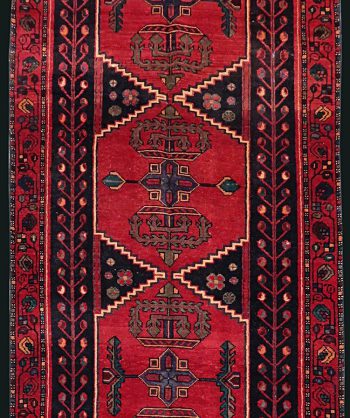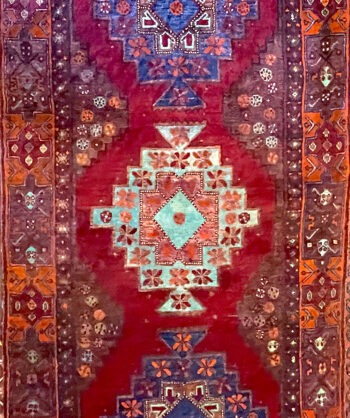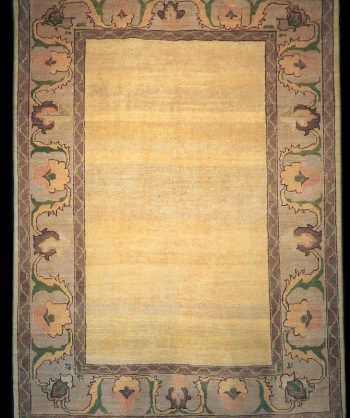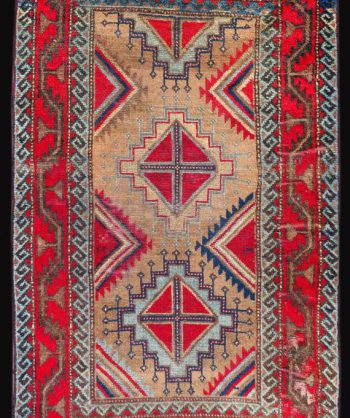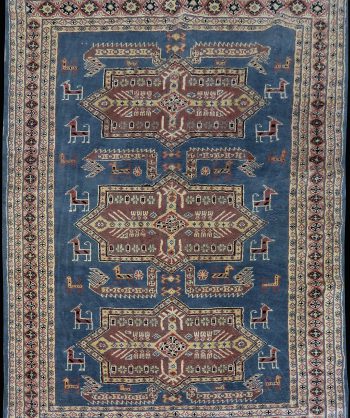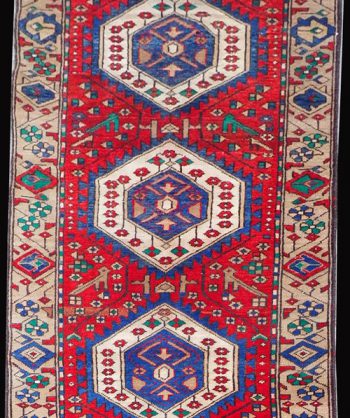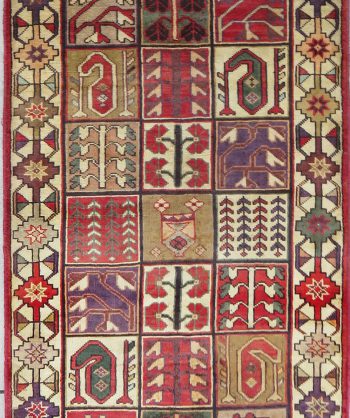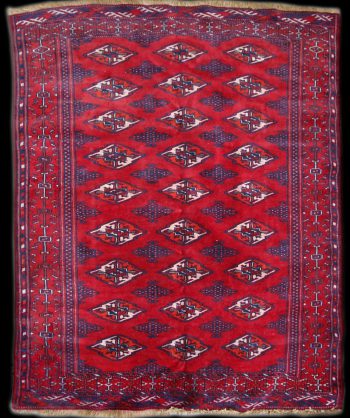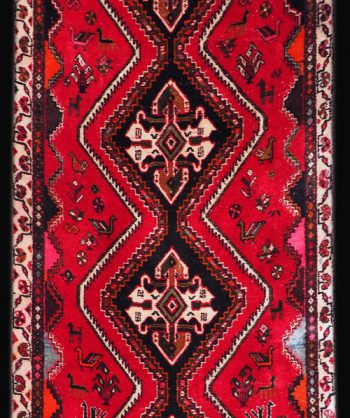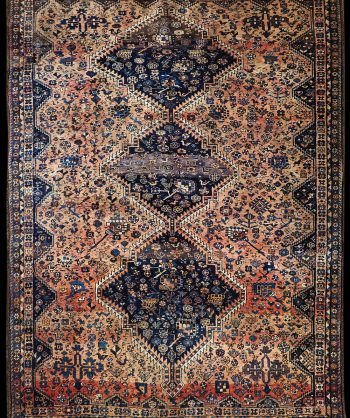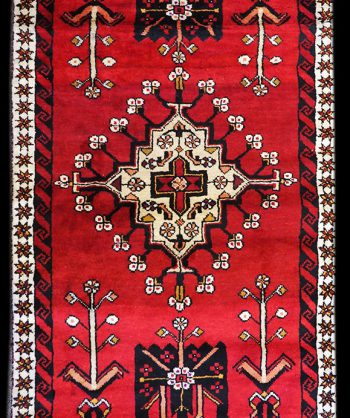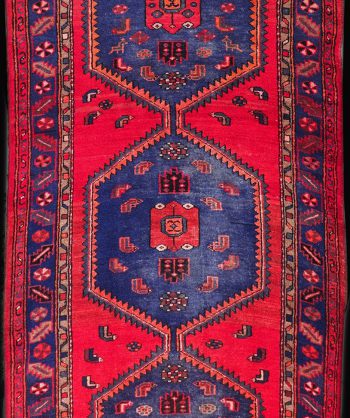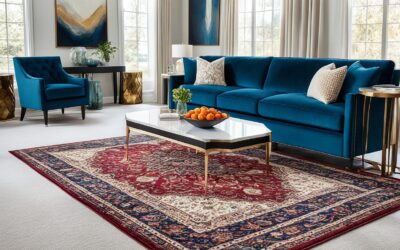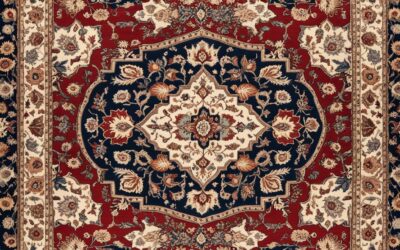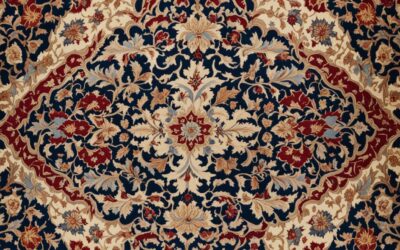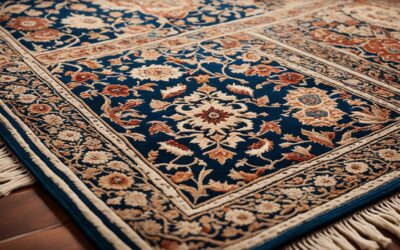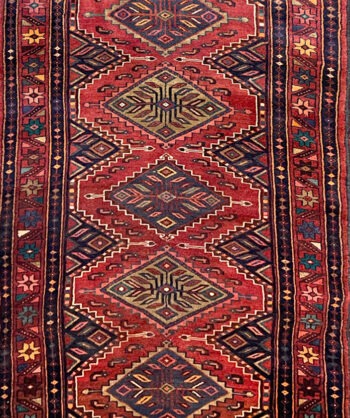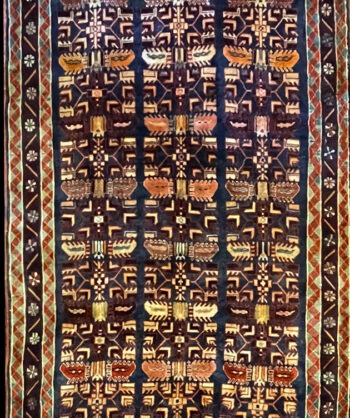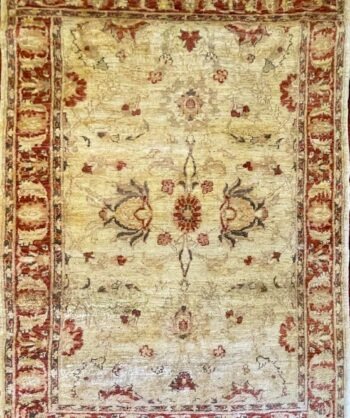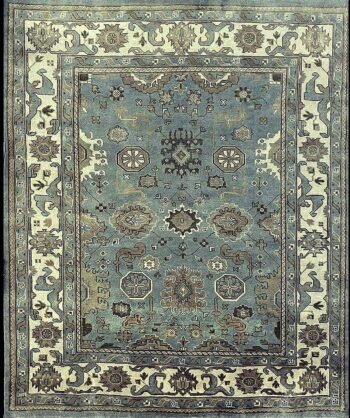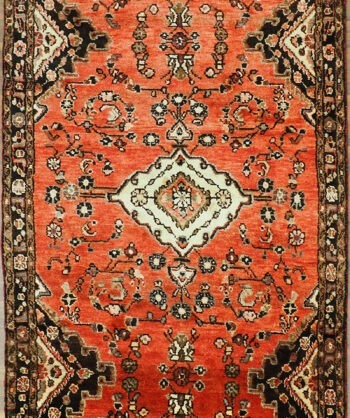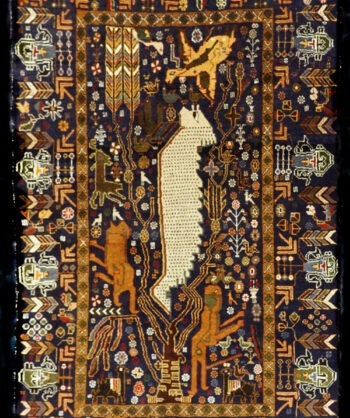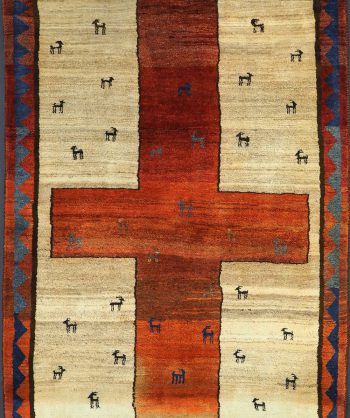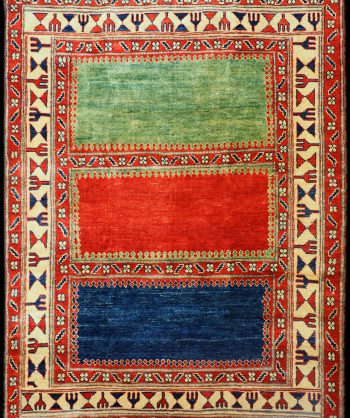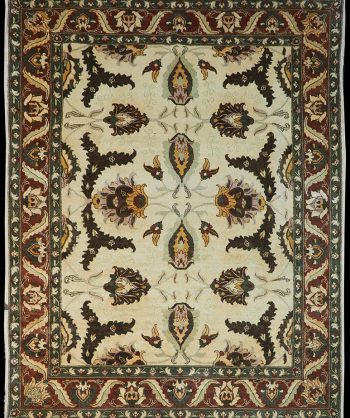Persian Gabbeh Rugs: Diamonds in the Rough
Gabbeh rugs are made by the nomadic Qashqai tribes of southern Iran. They are rough cut and long piled rugs of rich color and best quality wool. They are sometimes referred to by the heritage of the specific tribe by which they are woven, such as “a Lori rug,” or by the name of the city in which they are most often traded, such as “a Shiraz rug” or “a Shiraz Gabbeh.
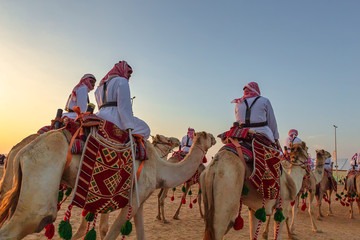
What does Gabbeh Mean?
The origin of the word “Gabbeh” literally translates to “in the rough,” and it is an accurate description of this style of Persian carpet. Gabbeh carpets are woven on makeshift ground looms constructed both of materials that are kept and hauled by the persian nomads for long distances through the zagros mountains, and also of materials that are found at each site where the tribe sets up camp. Due to the fact that part of the loom must be found at each site, a wide variety is introduced. Thus, these rugs are usually somewhat irregular in shape. But, for what they lack in perfectly uniform shape they more than make up for in character, durability, beauty and uniqueness of style.
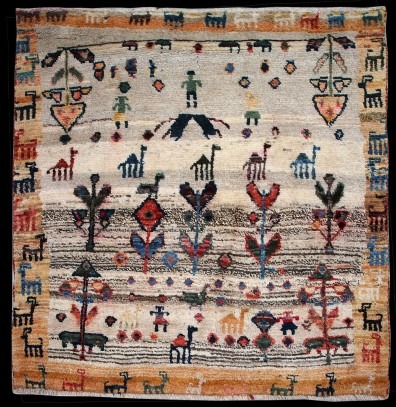
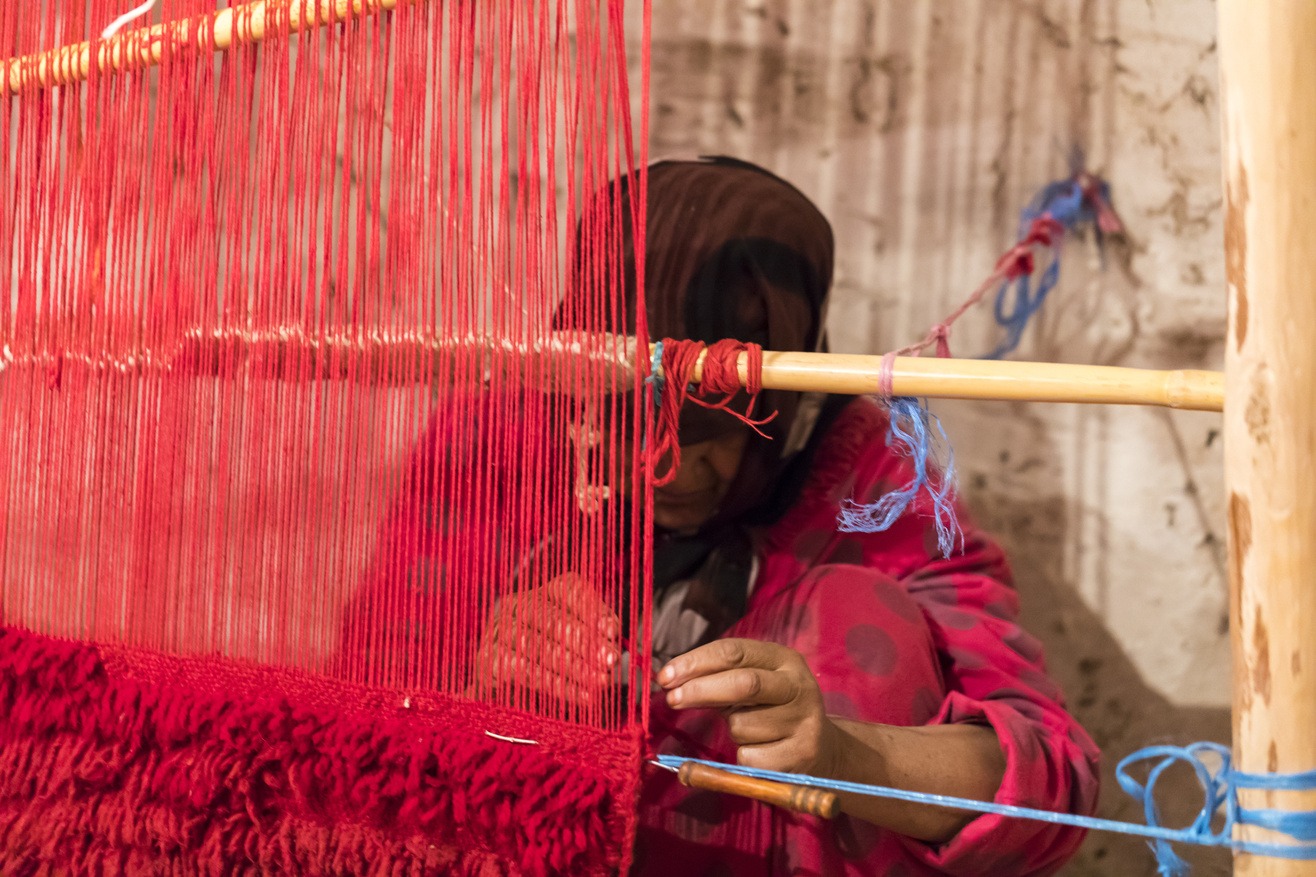
By tradition most Gabbeh carpets are woven by women, and most are one of a kind works of art. Some patterns and motifs are passed down thru the generations as mothers and grandmothers teach their daughters the art of Persian rug making. Many other patterns and designs are unique creations constructed from the rug weaver’s imagination and from her observations of the changing environments through which the tribe passes.
Gabbeh Rug Wools and Dyes
Gabbeh oriental rugs are created from high quality hand spun wool that comes from the tribe’s own sheep. Over the course of a year, the tribe herds its sheep hundreds of miles. The nomads reach very high altitudes with their stock. Their journeys stretch from the area between the highland pastures north of Shiraz in the Zargos Mountains (where they spend their summers) to the winter pasture lands near the Persian Gulf. An animal grazed in high altitudes produce more lanolin. Better quality wools have this higher lanolin content, giving them their sheen, softness and resistance to becoming stained.
The dyes used in Gabbeh carpets for color, can be either found or purchased. Some all natural, plant, vegetable, mineral and insect dyes are found by the Qashqai people in the different climatic environments they travel thru. And, some dyes are purchased when they stop in towns to trade their finished carpets for more materials. The use of all natural “vegetable plant” dyes allows for the wool used in the crafting of these amazing works of art to retain its lanolin despite being dyed. Once in a great while, you will find a gabbeh rug dyed with synthetic dye. Even more rarely, you may see materials like tinsel or a flourecent article playfully inserted into the designs by girls who are learning.
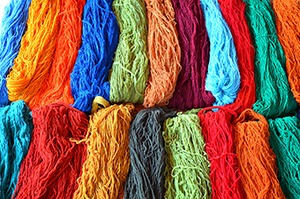
The majority of the wool used in the construction of Gabbeh carpets is handspun, using an instrument called a drop spindle. The woman who spins the wool holds the dyed wool she wishes to spin into a usable yarn in one hand. She keeps the drop spindle spinning with the other hand. If you would like to see how this is done please see the video on our site for a demonstration.
After the wool has been dyed and handspun, it can then be taken to the loom and used to begin to handknot a rug. Most Gabbeh area rugs are knotted using both Turkish symmetrical and Persian asymmetrical knots. Sometimes a rug is even constructed using both types of knots in the same rug. Because the all the Qashqai tribal weavers use both types of knots, it is difficult to tell from which individual tribe any one rug has come from.
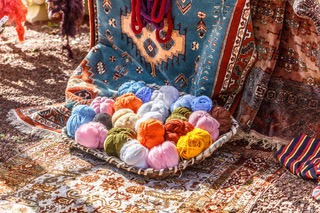
Constructing a Persian Gabbeh Rug
The construction of a Persian gabbeh carpet begins with laying the frame of the ground loom to the desired width and length of the finished product. Horizontal (or ground) looms are the simplest type of loom. They are easily assembled and dismantled and so are the best choice for those who construct hand knotted rugs as part of a nomadic lifestyle. Rugs woven on horizontal looms are usually small. The bars that make up the frame of the loom are attached to the ground by stakes or nails. The next step is to stretch the warp strands between the top and the bottom (horizontal) bars of the frame. After the warp is completed, the weft of ground loom is set up. The weft somewhat resembles the strings of a harp. It is around these “strings” of the weft that the knots that make up the pile—and the design and pattern of the rug—can begin to be tied.
A Persian Gabbeh area rug is created from the bottom up, row by row, knot by knot; the design is carefully crafted by the weaver. The way in which these works are created, piece by piece, knot by knot, point by point,most closely resembles the style of pointillism in painting. But with pointillism, the artist can choose any point upon the canvas at any moment, to lay down paint, and thus establish a framework in creating the larger design of the masterpiece. In contrast, the rug weaver must progress along a horizontal line, laying down each point of their grand design in an organized manner. This requires a great deal of skill; characteristics they must be able to remember exactly the final design they wish to create, and they must go about it piece by piece, from the bottom up, without having access to laying down any framework of the larger design they wish to create with their canvas of wool. Taking this process into account, one begins to see why Persian rugs have been, throughout history, and still to this day, one of the world’s most prized artistic possessions.
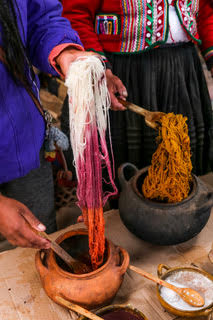
A typical size for a Gabbeh carpet is 3 feet by 5 feet. The time it takes to create just one rug of this modest size can vary depending on the knot count. Generally it takes approximately 18 and 25 hours to create this small rug. Tribal Gabbeh rugs are usually of lower knot count when compared to those more common Persian carpets made in shops in the towns and cities on permanent vertical looms. But due to the quality of wool, the length of the pile and the wear and tear of being woven on a ground loom (with the weaver most often sitting upon the area of the rug that has already been finished), Gabbehs are of extreme durability. In addition to this wear and tear on the tribal rugs, looms must be taken down, rolled up and moved to different locations as the tribe moves from place to place. Therefore the knots tend to be very tight, in a way that cannot be achieved by rugs woven in more modern shops and on more permanent looms.
The Nomadic Lifestyle and its Influence on Gabbeh Rugs
The nomadic lifestyle of the Qashqai people often requires that they use varying qualities of dye materials, hand spin their wool as it is harvested from their flocks, set up and take down their looms, and work on their rugs in different locations. Due to these factors, their nomad rugs are often times not perfectly symmetrical in overall size. The lifestyle also contributes to the wonderful and sometimes awe inspiring overall variations in the patterns, animal motifs and colors used within one rug to complete a grander design. Some times the variation in color in a rug tells a story, a story of when the tribe migrated, the animals they become fond of, what new environments they encountered and of how many people took part in the making of the rug.
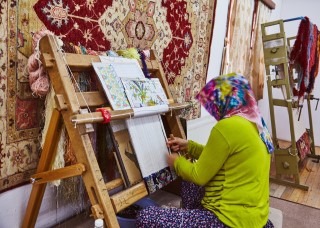
Persian Gabbeh Rug Examples
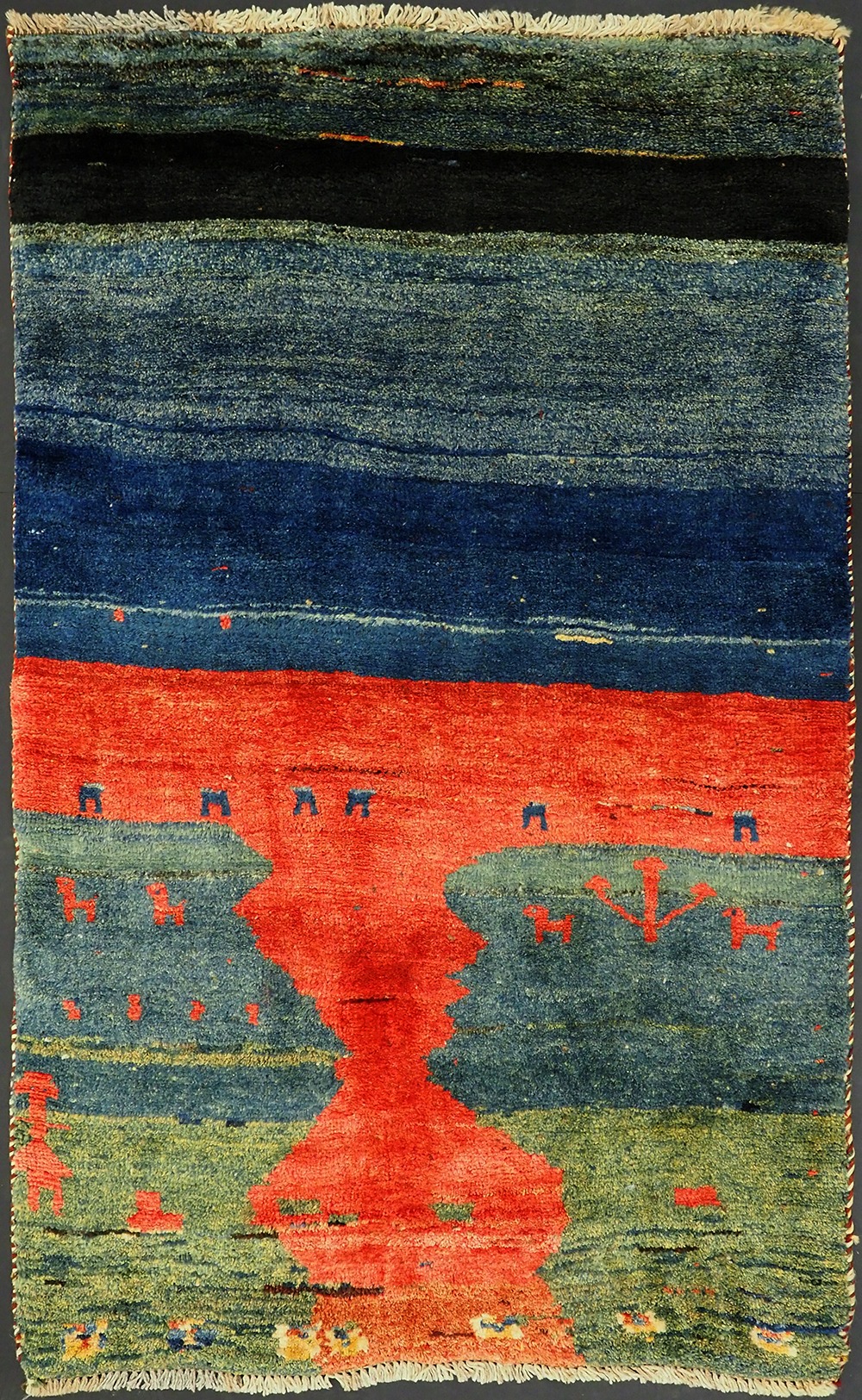
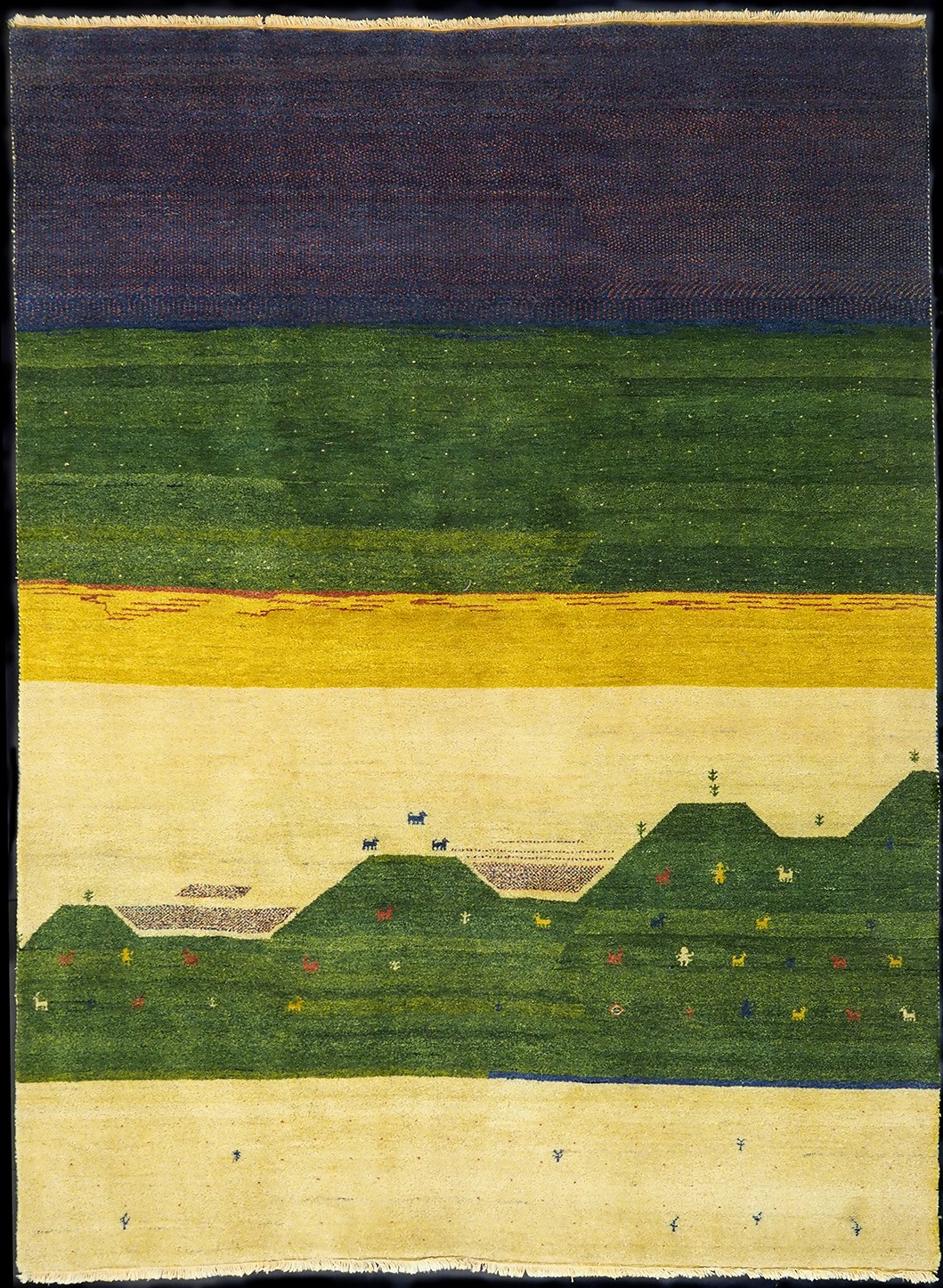

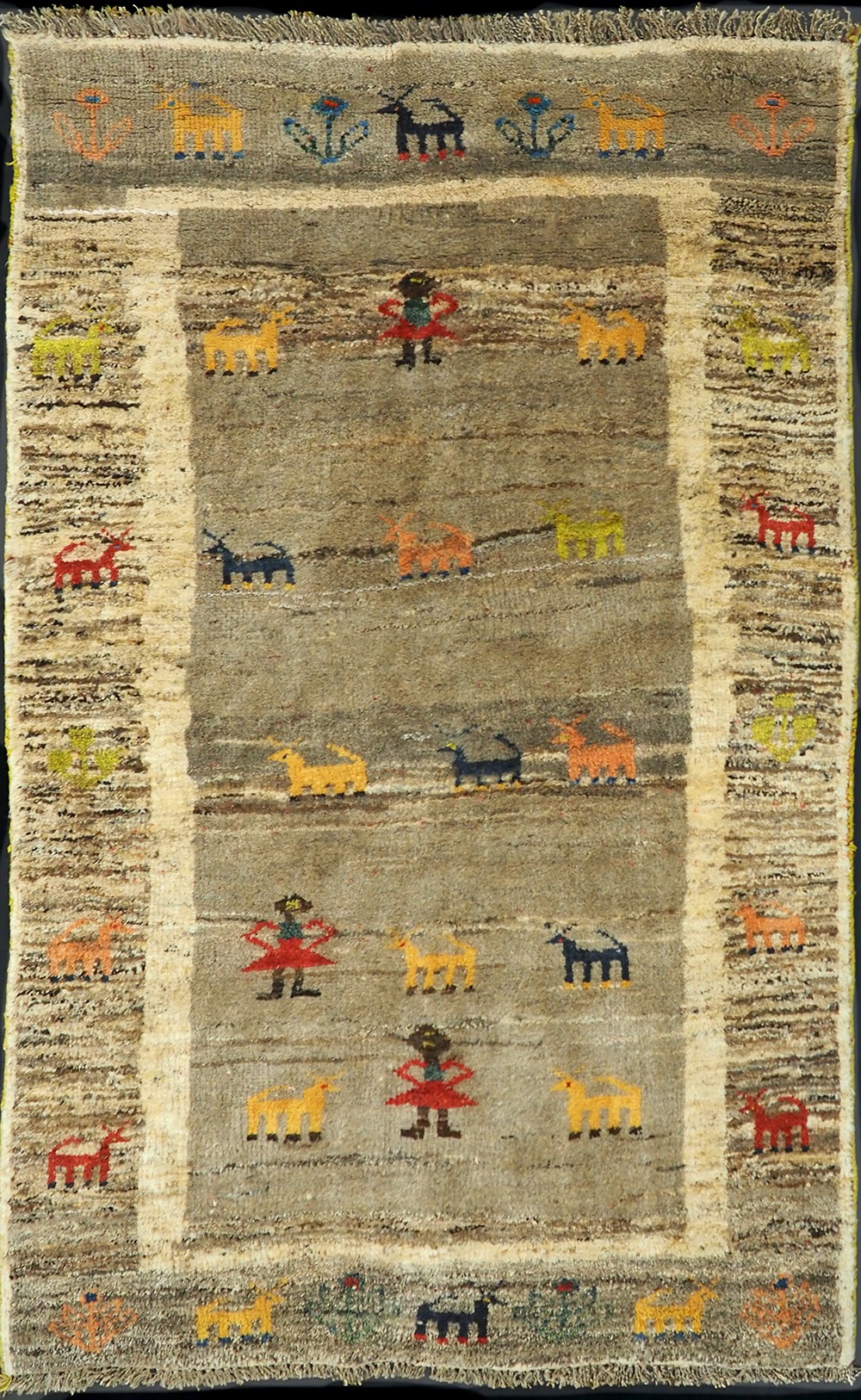
-
1930 Antique Persian Heriz Runner #17-069 SOLD
$1,995.00$598.503' 10" x 10' 1"
-
4290 Hamadan Carpet
$1,895.00$568.504' 4" x 9' 10"
-
Afgahn Chobi Carpet #4476
$2,900.00$870.006' 8" x 8' 7"
-
Afgan Taimani Balouch Rug #19-039 SOLD
$1,195.00$358.503' 0" x 5' 0"
-
Antique Kazak Rug (4419)
$3,800.00$1,140.005' 8" x 9' 1"
-
Antique Kazak Serapi Rug #19-043 SOLD 7-4-25
$1,995.00$598.503' 3" x 13' 0"
-
Antique Persian Karache Serapi Rug 18-039
$1,695.00$508.503' 6" x 9' 4"
-
Antique Persian Rug #17-057
$1,050.00$315.004' 1" x 5' 2"
-
Antique Persian Runner #19-030
$1,495.00$448.503' 8" x 10' 0"
-
Antique Qashqai Rug #19-020 SOLD 12-23
$4,400.00$1,320.006' 1" x 9' 7"
-
Antique Traditional Hamadan Rug #2605
$1,895.00$568.503' 8" x 6' 6"
-
Antique Tribal Persian Rug 19-041 SOLD
$2,800.00$840.003' 8" x 10' 5"
Shop our Gabbeh Collection
Each one of our Gabbeh Rugs is a unique, one of a kind, hand-woven piece of art. We have dozens in our collection. Click the link below to browse our current selection.

